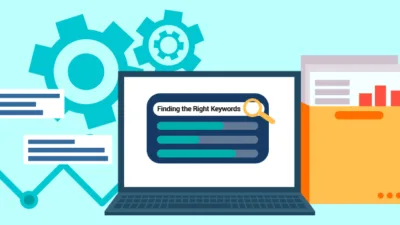Are you willing to take your eCommerce store at a new level? Do you look forward to migrating from Magento 1 to the latest Magento 2? Well, Magento 2 is one of the most popular and widely used eCommerce platforms across the globe. Magento has recently released its latest version 2.3 for giving and unprecedented sales power and business management flexibility to the eCommerce store admins.
Henceforth, if you are a Magento 1 customer, you can consider migrating your site to Magento 2 for making your online store ready for the future changes. As it will prepare you for a mobile-first world and a few robust tech integrations according to the requirements of your customers that come your way.
What is Magento 2.0 and its Benefits?
As of late, Magento 2 has been changed into an adaptation of the Magento eCommerce stage by including new engineering, code structure, and database plan. The Magento developers from the eCommerce platforms have made it user-friendly to sync with the modern eCommerce trends which turn to be more valuable for the store retailers.
In this article, we will be looking at some of the best advantages you can gain by switching to Magento 2. Let’s get started with.
Set up the Future-Ready code
For all those eCommerce store owners who haven’t given a thought to migrate from Magento 1 needs to think right now. Because as per the Magento community, it has planned to end the support for Magento 1 by the end of June 2020. This indicates that if you are depending on the old software support, you require to upgrade both the quality fixes and security patches. But what about those merchants who have recently switched to Magento 1 year ago?
All things considered, nobody can anticipate the future, as the Magento specialists in the eCommerce improvement stage are energized over the new highlights and bolster plans given by Magento 2. There are stronger reasons to stay hitched to Magento 2 due to the structure of its codebase and specially designed for the modern eCommerce. The stage is versatile upgraded and prepared for omnichannel by utilizing the most recent PHP 7.x codebase. It is additionally entirely adaptable and has a huge network of open-source engineers cooperating to improve it every day. There are various reasons to migrate from Magento 1 to Magento 2 with some futuristic proofs and technology investment.
Theme Migration:
For moving to Magento 2, you can’t straightforwardly move from your old Magento 1 mode. To resolve this, the Magento 2 themes are modified according to your current theme for making it compatible with the Magento 2 standards.
Extensions:
With the tweaked subject, extensions offer a wide scope of highlight by improving their functionalities of your Magento store. It is vital to note that Magento 1 extensions do not work on Magento 2. So, you need to purchase separate Magento 2 Extensions.
Customized Store:
You can create a range of customizable features for your old Magento 1 store to perform exactly what the business requires. But with the Magento 2, you cannot really give a thought of creating customized extensions and if you are thinking to migrate then you need to re-build on Magento 2 framework.
Migrating the data:
Lastly, you are required to adjust the Magento 1 settings and transfer your data to Magento 2. To support this, Magento has released data migration tools which will helo all the developers to shift and store their crucial data using CLI commands.
Multi-source inventory:
The eCommerce vendors are dealing with various stockrooms stock levels from the administrator side without taking the assistance of outsider instruments. All the more significantly, the stock administration works alongside a booking framework where the traders are permitted to check their stock all the more accurately during the pinnacle request times and for the store to have a superior checkout execution. Magento 2 is focusing more on the CMS improvements as the websites depend more on the banner content which is now referred to as a dynamic block. The users are allowed to create a highly-customized native Magento WYSIWYG interface or an integrated TinyMCE for gallery and widgets that work as plugins and which can also be configured as plugins.
Extra Features:
Magento 2 has been coming with the much-awaited and user-friendly feature called PageBuilder. With the help of this tool, you can build and customize your store pages with the surprising new elements with or without coding HTML and CSS. Rather than opting for a specific shopping app, the users are shifting towards the progressive web apps that provide app-like experience using web technologies. It is expected to see a quick rise in the PWA as the store owners are seeing future scope in it.
On the specialized side of the PWA, AngularJS, Vue.js and React are enabling, on the frontend, while Magento 2 REST API is on the backend. The users can also request a specific piece of information that they want and later join all the data in one request. This shows fewer API solicitations and Magento PWA is getting all the speedier and increasingly stable in a portable system. Magento 2 provides an Elasticsearch for the commerce edition users but now finally it allows all the Magento-based store owners to have a powerful faceted search in their online stores which are created in Java and best-fitted for a full-text search and HTTP interface. With the assistance of definitive DB pattern, you can improve the underlying establishment of Magento 2.3 and work with the modules. All of the declarative schemas support the database rollback to get it into the split or shared DB structures.
Wrap Up
Here, we come to the end of the article. We hope you have gained a bit of extra information before migrating to Magento 2 and how it can add tremendous benefits to your business capabilities. Well, you have to compulsorily migrate to the Magento 2 before June 2020 and henceforth we recommend you to search for a professional Magento Migration Service. Till then – keep learning!












